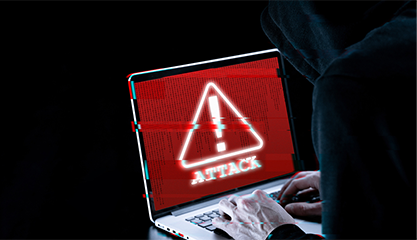Introduction
Distributed Denial of Service (DDoS) attacks pose a significant threat to online services and applications by overwhelming their resources and rendering them inaccessible to legitimate users.
Started off as a prank by hackers, DDoS attacks have evolved over the years into a means of disrupting competitors’ businesses, infrastructures of essential services like power and water, and those of banks and financial institutions.
DDoS attacks have grown in sophistication and complexity from at first targeting Layer 3/4 to now even Layer 7, the more recent development of “DDoS Attacks for Ransom” has further complicated matters for IT security leaders. “DDoS as a Smokescreen” often result in data theft and financial loss, and mostly detected only when theft is discovered independently, long after the attack has ceased.
DDoS attack detection has become very challenging for enterprises, as they can vary in scale and complexity. Here are some common indicators that organizations can look for.
How to Detect Signs of a DDoS Attack?
- Unusually high network traffic and unexplained sources:
One of the most apparent signs of a DDoS attack is a sudden and significant increase in network traffic. This traffic surge can overwhelm your network infrastructure. Monitor your network traffic patterns and sources, e.g., unexpected countries of origin. Irregular spikes or unusual patterns in incoming traffic indicate a possible attack. Performing a deep packet inspection to analyze the type and origin of incoming traffic can help differentiate legitimate traffic from malicious traffic. - Website slowness or inaccessibility:
If your website or online services become slow or completely unavailable to users, this could be due to a DDoS attack. However, during seasonal holidays or festivals, a surge in traffic needs more critical analysis as it could be caused by bandwidth limitation rather than a DDoS attack. Provisioning for additional bandwidth or advanced CDN services can come in handy during such times and prevent confusion. - Service disruptions with increased error rates:
Check for service disruptions in critical systems such as email, database, or cloud services. If users experience difficulties accessing these services, this could be due to a DDoS attack. Check for a significant increase in error messages or HTTP error codes, such as 503 (Service Unavailable) or 504 (Gateway Timeout). “Service Unavailable” errors during cart checkout can impact your revenue realization significantly. - Unwanted bot traffic:
DDoS attacks often employ botnets. Being vigilant for indicators of elevated bot traffic, such as a notable increase in automated, non-human visitors to your website can go a long way in protecting against botnet-based DDoS attacks. Scrutinize patterns of traffic originating from automated software/bots programmed to execute repetitive, often straightforward tasks online. These seemingly inconspicuous points can develop into potential weak links in your system's defense, potentially leading to lateral damage. For instance, if your login process lacks additional security measures (e.g., captcha challenges or image recognition), it can render your critical systems susceptible to security threats. - Resource depletion:
DDoS attacks can target specific server resources such as CPU or memory. Monitor resource utilization—if it's consistently high, this could signify an ongoing attack. Resource-hungry business processes such as ERP or Advanced Analytics /computing processes can take significant hits when CPU or memory are depleted. - ISP alerts:
Collaborate closely with your Internet Service Provider (ISP), who might be able to detect unusual traffic patterns and alert you to a potential DDoS attack. In the event of a severe DDoS attack, contact your ISP and share traffic data with them. They may be able to help mitigate the attack closer to its source. Engage with your ISP early on to get expert help. - Monitoring tools and anomalous user behaviour:
Use specialized DDoS detection and mitigation tools to automatically identify and respond to irregular traffic patterns from both external and internal user behavior. You can choose to use an in-house DDoS mitigation solution or a similar service via the cloud, or even use hybrid options, depending on your needs. - Rate limiting and traffic filtering:
Implement rate limiting and traffic filtering to block or restrict traffic from suspicious sources, which can help mitigate the impact of the attack. However, this approach can have the drawback of restricting legitimate traffic as well.
Is it possible to forecast a DDoS attack?
While it's certainly possible to detect early signs or prepare to protect your organization from potential attacks, predicting a DDoS attack with accuracy is extremely difficult. However, there are some best practices that you can follow to help identify potential risks.
Historical Data Analysis: Analysis of attack patterns from previous attacks can help identify trends that suggest which industries or organizations are more likely to be targeted.
Threat Intelligence: Security teams often rely on threat intelligence sources to stay informed about emerging threats and possible vulnerabilities. If you do not have an organized threat intelligence mechanism in-house, it would be advisable to engage a partner for this. Subscribe to our Threat Intel advisory now! Collaborating with other organizations or across your industry to share information about recent attacks and vulnerabilities is another proactive approach to security.
Monitoring and Anomaly Detection: Employing network monitoring and anomaly detection systems can help identify unusual traffic patterns or spikes that might indicate an ongoing or imminent DDoS attack. Without an intelligent 24/7 managed detection solution that gets live feeds from the net-flow data from your ISP, there is a strong possibility of attacks going unnoticed.
Attack Motivations and Political Factors: Understanding the motivations of potential attackers can sometimes provide insights—for instance, organizations involved in high-profile disputes, areas of political unrest, and countries at war are all cases where network traffic should be monitored more closely.
Remember that early detection and rapid response are critical to mitigating the impact of DDoS attacks. Implementing a proactive cybersecurity strategy that includes monitoring, DDoS protection solutions, and an incident response plan to effectively handle such attacks when they occur go a long way in ensuring the security of your organization.



